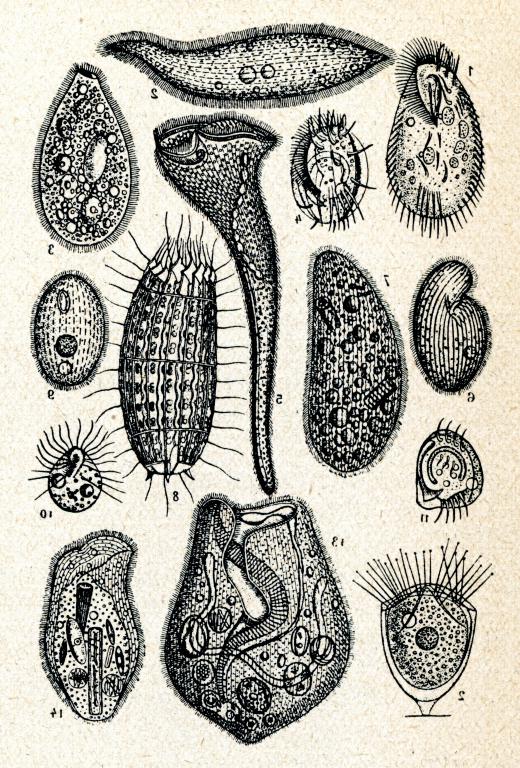What is Slime Mold?
 Michael Anissimov
Michael Anissimov
Slime mold is a broad categorization of fungi-like, slimy, amoeboid protists (unicellular eukaryotes, i.e., non-bacterial unicellular organisms) that feed on wood, flowers, fruits, mulch, any other type of dead plant material, bacteria, yeast, and fungal spores. Individual slime mold organisms are usually microscopic, but some species form coenocyte colonies that are usually a few centimeters across. A coenocyte is a large cell with many nuclei which occurs when nuclear division is not accompanied by cellular division. In some instances, these coenocytes can grow in size up to 30 square meters, making them the largest individual cells in the animal world, much larger than the ostrich egg, which is often mistakenly cited as the largest cell.
Slime molds come in a variety of shapes, including irregular, spherical, bulbous, cylindrical, and colors, including bright pink, orange, yellow, white, gray, and brown. In some ways, their colonial behavior is reminiscent of the behavior of multicellular fungi, though they are technically colonies of unicellular organisms. Upon maturity, a colony of slime mold forms a sporangium, a spore-filled bulb on a stalk, that releases spores into the environment. These spores hatch both amoeboid and flagellated gametes which combine to create a zygote, which subsequently develops into a slime mold colony, depending on available nutrients.

The group of organisms called "slime molds" is polyphyletic -- that is, they do not descend from a common ancestor. Though slime molds were initially mistakenly categorized as fungi, scientists now consider them non-fungal protists that belong to four distinct families: the Mycetozoa (part of kingdom Amoebozoa), Acrasiomycota (part of kingdom Excavata), Labyrinthulomycota ("slime nets", part of kingdom Chromalveolata), and Plasmodiophorids (plant parasites, part of kingdom Rhizaria). It is interesting to note that the four groups of "slime molds" are actually part of entirely different protist kingdoms, despite their shared qualities, which emerged as a result of convergent evolution.

The different groups of slime molds have different characteristic adaptive strategies and structures. For instance, the "slime nets" are so known because they construct networks of membrane-covered tubes and filaments which are used as tracks to guide cells, as well as absorbing nutrients for them. This structure is known as an "ectoplasmic net". A unique organelle called a bothrosome constructs these filaments. Slime nets are most distantly related to the other slime molds, with some scientists considering them their own group. Another group of slime molds, the Acrasiomycota, are known for releasing pheromones to aggregate amoebal cells in preparation for colonial movement.
AS FEATURED ON:
AS FEATURED ON:












Discussion Comments
Does anybody know anything about chemical cues and how they are related to slime mold?
@ninetydegree - Yes, the black slime mold on your plants or grass can have an odor. Especially during the rainy season.
Keep your plants well-drained and your grass cut regularly. Other than that, you'll have to ask a mold expert.
Does slime mold juice have an odor?
Post your comments